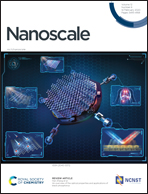A negative electrocaloric effect in an antiferroelectric zirconium dioxide thin film
Abstract
A large negative electrocaloric effect is demonstrated in an antiferroelectric ZrO2 thin film with 8 nm thickness deposited by atomic layer deposition. An adiabatic temperature change as high as ΔT = −31 K is obtained for an electric field change of ΔE = 3.45 MV cm−1 at an ambient temperature of 413 K. Moreover, the ZrO2 thin film shows enhanced stability as demonstrated by endurance and Preisach density maps. Due to its high phase transition temperature, high thermal stability, high scalability and full CMOS compatibility, ZrO2 is proposed as a promising candidate for future multilayer electrocaloric and solid-state cooling devices.



 Please wait while we load your content...
Please wait while we load your content...